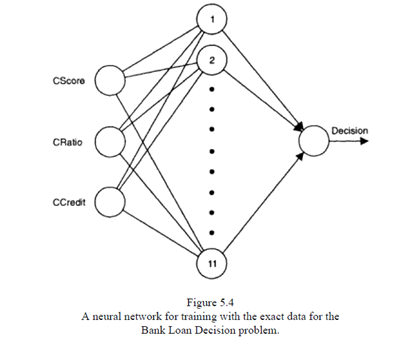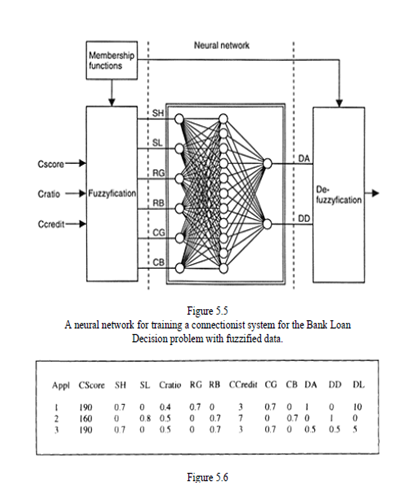SKEDSOFT
Introduction:-When problem knowledge is represented by a set of past data, a neural network can be used and trained with the data. The network should then be treated as a connectionist knowledge base. The data used can be exact or fuzzy or a combination of both.
 Using exact training data an MLP neural network, with 3 input neurons, 11 intermediate nodes, and 1 output neuron, to be trained with the use of the back propagation algorithm, is shown in figure 5.4.
Using exact training data an MLP neural network, with 3 input neurons, 11 intermediate nodes, and 1 output neuron, to be trained with the use of the back propagation algorithm, is shown in figure 5.4.
The number of hidden nodes is assigned to be equal to the number of supposeddifferent groups of applicants. Such a relatively large number of hidden nodes would facilitate effective training on a very large data set. Testing the validity of the neural network after training can be done with an use of a test set.
Using fuzzy input data: The three exact input variables above are fuzzy-quantized into six fuzzy values using the fuzzy membership functions the output value is represented by two fuzzy numbers, corresponding to the two membership functions of the fuzzy output labels "approve" and “disapprove" (figure 5.5).
Figure 5.6 shows the results for three test data examples. The results for the first and for the second application cases are as expected. The network does not infer any particular decision for the third application case, which is also correct.
The neural network's "answer" is "don't know." The neural network "cannot suggest'' anything about this application.
Some advantages to using this approach to building connectionist knowledge bases are easy and fast knowledge base development, no need for interviewing experts, etc.; easy accommodation of new case. Examplesas they come through further experience; and good approximate reasoning facilities; new cases are judged on the basis of the closest past cases.
There are also disadvantages to this approach, namely, it is difficult to understand and explain the solution; therefore there is a need for neural network analysis and explicit knowledge extraction for justification and explanation.
